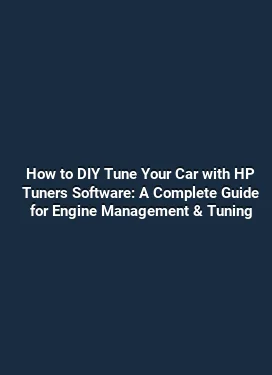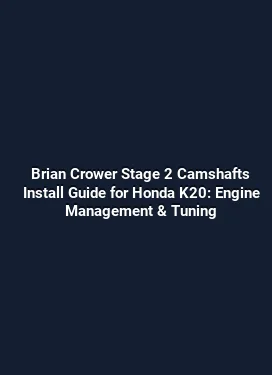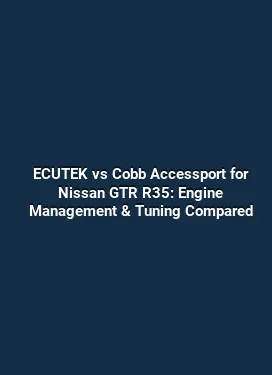How to Port and Polish Cylinder Head on Ford 302 Small Block
Porting and polishing a Ford 302 small block cylinder head is a precise process that blends machining technique with a strategic understanding of airflow dynamics. When executed correctly, it can unlock meaningful gains in horsepower and torque, especially when paired with matching intake, cam timing, and exhaust improvements. This guide focuses on practical, real-world steps, tools, and checks that a typical enthusiast or shop technician can perform with a well-equipped bench setup, a basic machine shop footprint, and a solid safety mindset.
Preparation, Safety, and Baseline Assessment

Before touching a cylinder head, establish a clear plan rooted in the vehicle’s intended use, fuel system, and RPM range. A Ford 302 small block benefits from a balanced approach: more flow in the intake tract and efficient exhaust scavenging without sacrificing part-throttle driveability. Start with a clean, inspected head that has no cracks or warpage and confirm the valve seats are intact and the guides are within spec. A reliable baseline includes port ceiling measurements, runner cross-sectional area, and valve seat geometry for the intended valve size.
Safety comes first. Wear eye protection, a proper respirator, and hearing protection when cutting, grinding, or using abrasives. Secure the head in a stable vise with soft jaws to avoid marring the gasket surfaces. Use appropriate coolant stills or a dry, oil-free environment to prevent contamination. A well-lit, ventilated workspace reduces errors and helps in detecting subtle defects during inspection.
Baseline assessment hinges on three pillars: flow potential, sealing integrity, and structural health. Flow potential is gauged with a flow bench or a portable air flow meter to measure intake and exhaust port capacity. Sealing integrity requires checking for valve-to-seat contact and the presence of any leakage paths around the valve guides. Structural health includes inspecting for cracks, corrosion, warp at the valve cover rails, and the condition of the valve springs and retainers that will bear the brunt of the updated combustion process.
Honing the Flatness of the Deck and the Valve Seats

Deck flatness directly affects gasket sealing and combustion chamber geometry. After removing the head from the engine block, check the deck with a straight edge and feeler gauge across multiple axes. If minor warp exists, a careful resurfacing operation may be warranted. The objective is to establish a true reference plane that ensures consistent gasket compression under load, especially with higher compression strategies. When addressing valve seats, inspect for damaged margins that could cause poor sealing. If the seats show wear, a partial valve job may be required to restore proper seating with minimal material removal.
Seat work should be performed with the correct cutter geometry for the Ford 302’s valve size and orientation. The goal is to create a clean, uniform seat face with a gentle radius to promote stable valve sealing at both high and low RPM. A conservative approach avoids excessive removal that would reduce the effective valve margin or alter the combustion chamber shape in ways that hamper combustion efficiency.
Porting Philosophy for the Ford 302 Small Block
Porting is not a race to remove as much material as possible. Instead, it’s a careful re-contouring of the intake and exhaust runners to reduce flow restrictions while maintaining structural integrity and proper swirl. The 302’s original port designs typically include rounded, compact runners that respond well to smoothing and a measured enlargement where the flow limit is reached. The primary focus areas are the intake runner roof, the pushrod boss area, and the transition from the port to the seat and valve area. For exhaust, attention to the short-side radius and the port-to-exhaust flange transition can unlock meaningful improvements in scavenging at higher RPMs.
One practical approach is to create a smoother, more curvilinear path without creating sharp corners or abrupt diameter changes. The aim is to minimize flow separation while preserving swirl that helps air-fuel mixing. Avoid removing material in the immediate vicinity of the valve guides or the pushrod walls, as those zones are critical for maintaining structural integrity and reliable valve sealing.
Intake Port Enhancements: Smooth, Contoured Transitions
Begin by evaluating the entry point where the lifter gallery meets the intake port. A subtle blend toward the valve guide can improve the flow path without undermining the seat’s perimeter. When enlarging the port for a larger valve or higher lift cam, the key is to extend the port belly slightly to reduce friction and boundary layer separation. The upper region near the valve seat should have a gentle concave contour to promote uniform velocity profiles across the valve face, reducing the risk of intermittent port restrictions at high RPMs.
Use long, fine-grit stones and carbide burs to establish the smooth, continuous contour. Regularly flush and inspect the port as you go to ensure no unintended gouges or deep scratches remain. Mark every modification with a light coat of penetrant or dye to identify any new stress risers, especially if the head is subjected to high-temperature cycles during testing.
Exhaust Port Modifications: Short-Side Radius and Equalization
Exhaust port work on the 302 is often about improving the short-side radius where the flow changes direction from the port into the exhaust manifold. A well-executed porting job reduces turbulence creation in the short side while preserving a smooth transition around the valve seat area. When enlarging exhaust ports for a performance cam, focus on maintaining the port’s overall geometry and avoiding excessive thinning of the material near the valve seat. The objective is a balanced port that supports consistent exhaust pulses across a wide RPM spectrum, thereby improving scavenging and reducing backpressure without compromising valve train reliability.
In practice, you’ll perform a careful blend using small, controlled stock removal steps. Frequent port pressure testing, such as with a flow bench or cold flow test, provides tangible feedback on how each modification affects flow. Document each change with photos and notes so the progression is reproducible for future builds or further refinements.
Valvetrain and Cylinder Head Assembly Considerations
Porting and polishing the head must be integrated with the rest of the valvetrain and engine management strategy. A Ford 302 benefits from a well-matched camshaft profile, with a lift and duration that align with the updated port geometry. Selecting appropriate valve springs, retainers, and locks that tolerate higher valve lift is essential to maintain control under high-RPM operation. Because airflow characteristics have shifted, a cam timing check and, if necessary, a retune of ignition timing can optimize power delivery across the RPM band.
Valve job specifics matter as well. When seating new or refurbished valves, ensure the margin between seat and top of the valve is maintained to preserve seat strength and heat dissipation capabilities. If the engine runs hotter after porting, consider upgrading cooling capacity or adjusting the thermostat strategy to sustain stable combustion temperatures. A robust cooling strategy reduces the risk of warping or gasket failure during higher-power operation.
Choosing the Right Valve Seats and Surface Finish
Valve seats should be ground with attention to the seat angle and width that suits the seating material and the intended fuel. A broader seat area can help with heat transfer and stability under high load, but it must be precisely machined to avoid edge cracking. A mild surface finish on the valve seat and the port wall reduces friction, contributing to measurable gains in flow and efficiency. For a Ford 302, selecting the right seat insert material and diameter is critical for long-term reliability when run with modern fuels or higher compression ratios.
Post-assembly, verify the head gasket sealing surface is free of chatter marks or scoring. Polish the gasket surface lightly only if necessary to remove minor imperfections while preserving the flatness of the sealing plane. A consistent, mirror-like finish is not a substitute for proper gasket sealing; the goal is a smooth, even surface that supports uniform clamping force across the head bolts.
Flow Verification, Tuning, and Real-World Testing
After completing the porting and polishing work, validate the gains with a systematic flow test. A flow bench helps quantify intake and exhaust improvements at several valve lift targets. Compare the results to your baseline measurements to assess the effectiveness of each modification. Interpretation should focus on the pressure differential and the resulting air volume at different lift heights rather than chasing peak numbers alone. Real-world improvements come from better low- and mid-lift flow, which translates to improved throttle response and drivability.
In tandem with flow testing, perform a controlled engine test on a dynamometer or a controlled chassis dyno. Start with a conservative ignition map and gradually advance timing in small increments, monitoring knock tendencies, detonation margins, and wide-open throttle power. Fuel delivery must be adjusted to match the new air flow characteristics; this often means richer mixtures at mid-range to prevent leaning out under higher-pressure pulses while ensuring optimal air-fuel ratio across the RPM band.
The testing protocol should include data logging of manifold vacuum, air-fuel ratio, EGTs (exhaust gas temperatures), and torque output. Use this data to refine the cam timing, valve train spring pressures, and the ignition curve. A disciplined approach to tuning reduces the risk of engine damage while extracting the full potential of the ported head.
Final Assembly, Break-In, and Periodic Checks
During final assembly, ensure perfect clean assembly practices. Use new valve seals, gaskets, and the correct torque sequence for the head bolts. A proper break-in procedure is critical; gradual evolution of engine load and RPM during the first few hours of operation lets the valve seats seat in evenly and avoids dynamic scoring. Monitor oil temperature and pressure, paying attention to any unusual fluctuations. Regularly inspect valve springs and seat contact after the break-in to confirm no early wear patterns have emerged.
Periodic checks after a break-in include rechecking torque values, verifying compression across all cylinders, and confirming no leaks in the gasket surfaces. If any abnormal behavior appears in the intake or exhaust flow during subsequent pulls, revisit the port contour and seat geometry to ensure the modifications remain aligned with engine operation and fuel strategy. A well-balanced hardware and tuning set yields durable performance gains that endure through the vehicle's daily use and track sessions alike.






